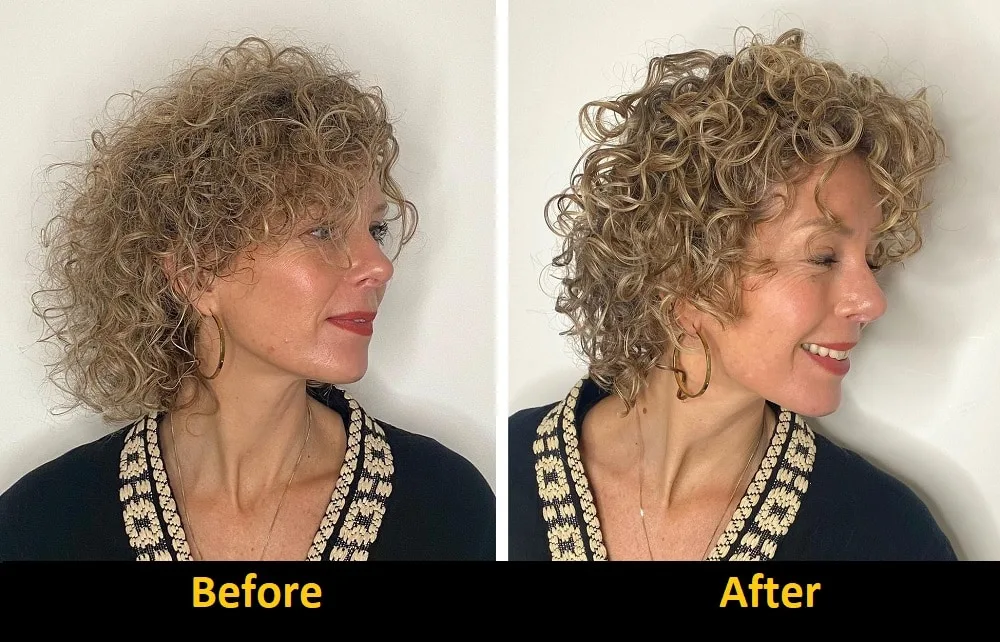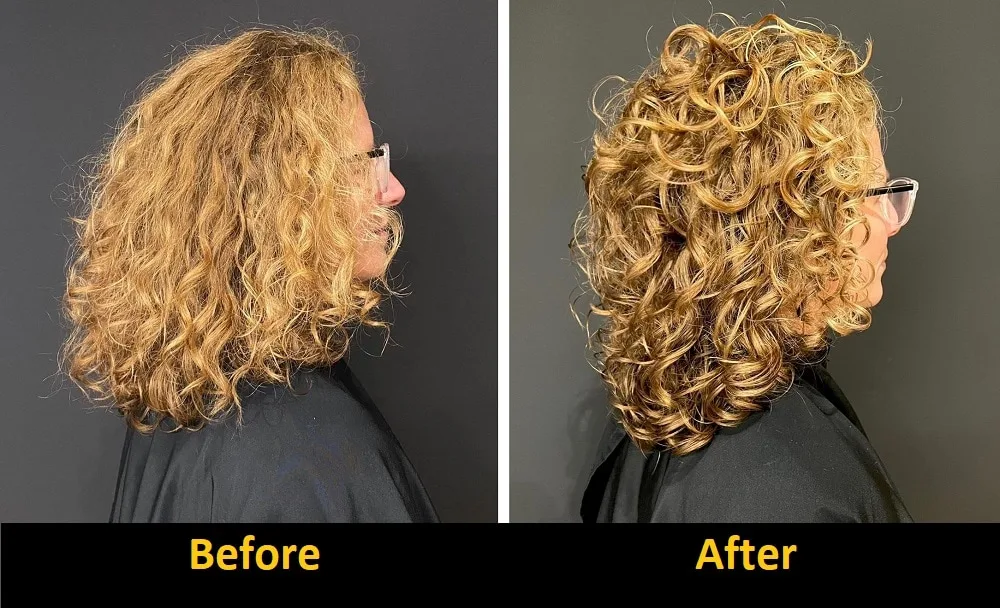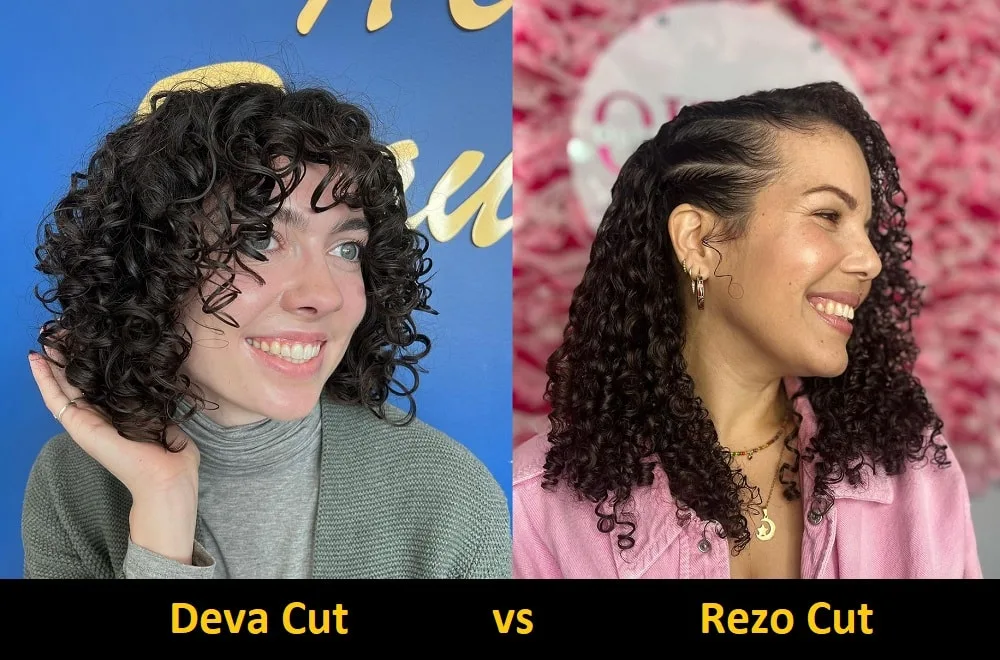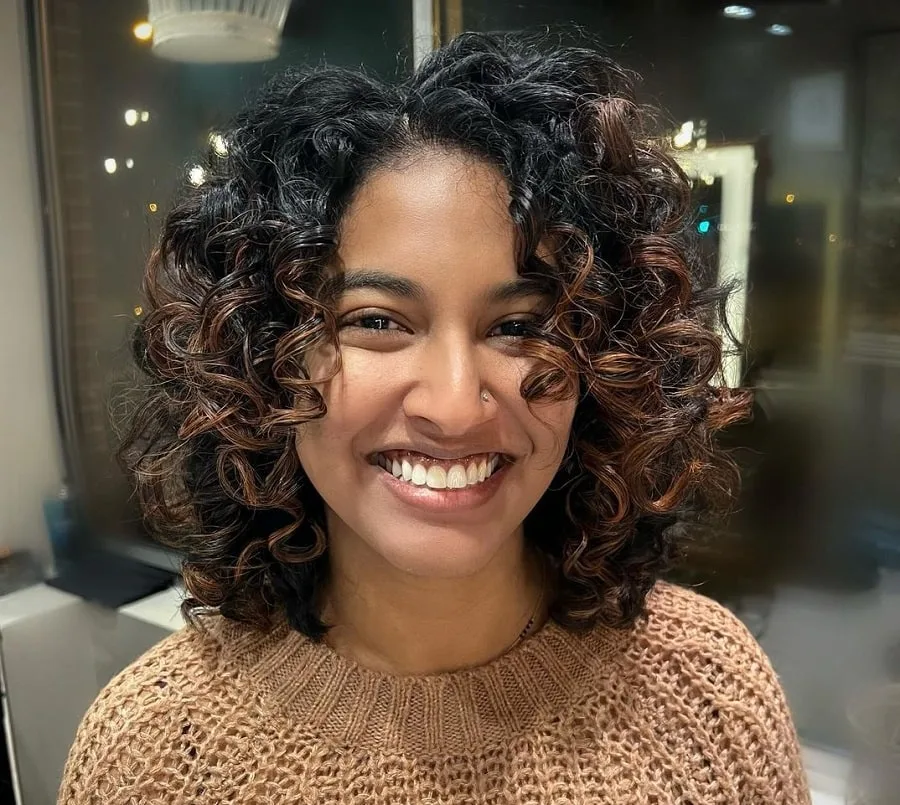Every curly-haired person understands the struggle to maintain those gorgeous ringlets—especially when a stylist treats it like straight hair.
The Rezo Cut and the Deva Cut are two popular curly hair-cutting techniques that enhance natural curl patterns and texture. Choosing between the two techniques can be challenging. You must understand the differences between Rezo cut and Deva cut before making a decision.
While both methods have a lot of similarities in that they enhance your natural curls, add volume, and are performed on dry hair, there are some key differences that you’ll want to know before you rush to the salon.
Differences Between Rezo Cut and Deva Cut
Though there is some overlap between the Rezo Cut and Deva Cut techniques, they are vastly different in the end result, and you should choose carefully depending on your hair goals.
Below, we’ll examine both cut types, their characteristics, and more.
What Is Rezo Cut?

The Rezo Cut is a technique used on curly-haired people to embrace the natural pattern, texture, and waves of their hair. The goal of this cut is to optimize the volume and texture of curly hair while maintaining even length around the entire head.
The technique is performed on dry hair and involves dividing the hair into triangular sections and cutting in circles.
The goal is to seamlessly blend all the different textures for great overall body, balance, and shape. The stylist will pay special attention to your hair to determine where the curls are the tightest.
Typically, curls are tightest at the top of the head, so the stylist will work to blend the top and bottom curls to create the crown and volume.
The Rezo Cut is best for curlies that want to preserve the length of their hair while embracing their natural curls. If you want big, voluptuous hair, the Rezo Cut will help you achieve that.
However, if you like to straighten or style your hair differently, the Rezo Cut also ensures the length of your hair is even all the way around, so you have the freedom to do that.
What Is Deva Cut?

Similar to the Rezo Cut, the Deva Cut is performed on dry hair and used to enhance the natural curl pattern and waves. But unlike the Rezo Cut, the Deva Cut’s main focus is not to maintain length, but rather on face framing.
Depending on the health of your curls, you could be looking at a big chop to achieve the optimal look with this cut.
There are three levels of stylists who can perform the Deva Cut:
Level 1: Deva Inspired
Level 2: Deva Advanced
Level 3: Deva Certified.
The higher the level, the more training the stylist has.
Before you go for a Deva Cut, the stylist will instruct you to wear your hair loosely, detangled, and in its most natural state—that means free of any styling product.
This is because the stylist shapes your hair curl by curl, while it’s dry to suit your preferences, so it’s best that they can see your natural curls and texture.
The stylist will begin by sectioning your hair so they can get to know your curls and patterns. From there, they will begin your cut. You may need to tilt your head from time to time; this ensures the stylist is giving you a well-rounded cut that looks great from all angles.
The Deva Cut is best for curly-haired people who want healthy, bouncy curls with some face framing, and aren’t overly concerned with preserving length or being able to straighten their hair.
You can straighten your hair with a Deva Cut, but keep in mind that due to the nature of the cut and its main purpose (to enhance natural curls) it may be uneven.
What Do Rezo Cut and Deva Cut Look Like?

The Rezo Cut is a triangular-shaped look that emphasizes texture, volume, curl pattern, and shine. You’ll see lots of bounce and big hair with this style.
The end result of the Rezo Cut shouldn’t be much shorter than your starting hair (unless you requested it short), as one of the goals of this technique is length preservation.
The Deva Cut also emphasizes bouncy curls but includes face framing. Deva Cuts may also be shorter, depending on the health of your hair before your cut.
Major Differences Between Rezo Cut and Deva Cut
Though both the Rezo cut and Deva cut are performed on dry hair and have similar end goals, these two cuts are vastly different.
Cost
On average, the Rezo cut starts around $85, while the Deva cut can range anywhere from $65–$100.
Maintenance
To maintain your style and ensure your ends stay healthy, you should plan on getting a Rezo cut every 3–6 months. The Deva cut, on the other hand, you should get every 3–4 months.
So, though the starting cost for the Rezo cut is high, the Deve cut is needed more frequently for maintenance.
Style
The main differences between the Rezo and Deva Cuts are shape, length, and style. The Rezo Cut is a triangular shape while the Deva Cut is more well-rounded.
Rezo Cuts are typically longer than Deva Cuts as one of the main goals of this method is preserving length.
The Deva Cut is for people who plan to wear their hair curly 100% of the time, while the Rezo Cut is cut more evenly to allow you to style your hair differently if you like, including straightening.
Below is a Rezo cut vs Deva cut comparison table that highlight the key points.
| Rezo Cut | Deva Cut |
| Starting cost around $85+ | Starting cost between $65–$100+ |
| Get this cut every 3–6 months | Get this cut every 3–4 months |
| Triangular shape | Well-rounded cut |
| Preserves length and volume | May need to be a “big chop” |
| Even cut | Adds layers, hair will be uneven when straight |
| Can wear your hair naturally or straightened | Meant to wear your hair naturally |
Are There Any Similarities Between Rezo Cut and Deva Cut?
The Rezo and Deva Cuts are designed for all types of curly hair and are great for people that want to embrace the look of their natural curls.
Both techniques are performed on dry hair to ensure the stylist is following your natural patterns and textures.
The end result of both cuts is healthy, bouncy curls that you can wear in their natural state.
How Is Ouidad Cut Different?

The Ouidad Cut is another technique for curly hair used to emphasize natural curl patterns—similar to the Rezo and Deva Cuts. However, that’s as far as the similarities go.
The Ouidad Cut follows the traditional hairstyling method, as the cut is performed on wet hair. The goal is to achieve elegant, free-flowing hair with no knots or tangles.
The stylist will begin by shampooing and conditioning your hair, then cut the length and shape to your preference.
Next, the stylist will use the “carve and slice” method to remove unnecessary bulk while paying careful attention to how the curls will lay.
This technique adds multiple layers to your hair to accentuate and preserve your natural curls and prevent knots, tangles, or frizz.
To finish off the look, your stylist will use the “rake & shake” method and special blow-drying techniques to complete the look.
The Ouidad Cut focuses on lessening curl volume and minimizing frizz while preventing the “pyramid” or “tree” shapes that result when curly hair is cut the same as straight hair.
This cut is best for people with pretty tame hair and looking for more defined curls with minimal frizz, tangles, and knots. The Ouidad Cut isn’t suitable for someone wanting more hair volume.
So, Rezo Cut or Deva Cut— Which One Is Better for You?
When it comes down to the Rezo Cut or Deva Cut, which one should you choose? That answer will depend entirely on your personal hair goal.
Are you looking for more volume and an even cut? The Rezo Cut will get you there.
Or do you want more face-framing curls and plan to always wear your hair naturally? The Deva Cut is the way to go.
Whichever cut you decide, using quality products and practicing proper hair care techniques will guarantee that your curls will always look their best!
